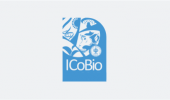| |
|
|
Research Methods in Biological Sciences (3(2-1))
This course describes how new science is being produced. Factual science vs ideal science. Matter: properties and laws. Cognition and knowledge. Perception and observation. Test and evidence. Scientific Writing. Research Methods. Research proposal.
|
| Statistical analysis / Morphometrics (3(2-1)) |
| |
|
|
Plant Resources (2(2-0))
This course discusses the meaning of plant resources, techniques and strategies for prospecting, evaluation, conservation, emphasing on the use of germplasm and biotechnology in all the stages, as well as the role of databases in the utilization and management of plant resources, diversity and abundance of green plants, the origin and classification of Angiosperms, how to recognize plants in general, and the introduction of plant families as a source of carbohydrates, proteins, and oils, tropical fruits and vegetables, medicines, herbs and spices.
|
| |
|
Plant Ecology (2(2-0))
This course discusses the understanding of plant ecology, synecology, and plant ecology. The influence of abiotic environmental factors (soil, light climate, temperature, humidity, wind, water and fire) and biotic factors (humans, animals, micro organisms and other plants) on growth. Libig minimum law, Shelford's law of tolerance, thermodynamic (energy) law. An understanding of adaptation, plant succession, and types of vegetation (plant communities), especially those in Indonesia.
|
| |
|
Plant Genetics (2(2-0))
This course discusses the basic cellular reproduction and inheritance; sexual reproduction and hybridization systems; Mendelian genetic theory and its consequences; the concept of linkage and crossing over; chromosome genetics and mutations; inheritance of quantitative traits and cytoplasmic genes; plant genetic resources; population and quantitative genetics; selection methods and breeding; heterosis and hybrids; and the basis of molecular genetics and plant genetic engineering. This course is completed with structured assignments to develop business plans or practical research aimed at increasing the added value of selected native Indonesian plants and their agribusiness prospects by utilizing the principles and techniques of plant genetics.
|
| |
|
Plant Metabolism (2(2-0))
This course discusses the aspects and processes of plant metabolism at organelle and cell level, including discussion on enzymes that involved in plant metabolism and its characteristics, primary metabolisms, including carbohydrate, protein, and lipid metabolism, secondary metabolism for main secondary metabolites such as terpenoid, phenol, alkaloid, and other N-derived secondary metabolites. The course will also discuss the recent knowledge on metabolomic and its application in agriculture, food, and health. The course will be delivered through class or online class, discussion, and assignments.
|
| |
|
Advanced of Plant Biology (2(2-0))
This course discusses the latest knowledge in the field of plant biology that involves various aspects of plant biology studies. After attending this lecture, students are expected to be able to examine the latest scientific articles in the field of plant biology.
|
| |
|
Colloquium Master Program (1(0-1))
Colloquium is a means for students to present a thesis research plan that has been consulted with a supervisory commission. Colloquium is held in front of students, supervisors, and lecturers. The final results of the colloquium in the form of research proposals that are ready to be used as a reference in the implementation of thesis research.
|
| |
|
Research proposal (2(0-2))
This research proposal subject requires students to write their thesis research plan proposals, which are complemented by a literature review.
|
| |
|
|
Seminar (1(0-1))
The seminar is the presentation of thesis research results in an SPs scientific forum to disseminate research results, both in writing and orally, to absorb input from the forum to improve thesis, add scientific insight, and increase scientific communication competence.
|
| |
|
Scientific Publication (National/International/international proceeding) (2(0-2)/
3(0-3)/2(0-2)
Is part of the thesis research activities as outlined in scientific articles published in national / international scientific journals
|
| |
|
Thesis research (6(0-6))
It is the final task of the master's program students as one of the graduation requirements that includes research activities both in the laboratory and in the field and writing a thesis.
|
| |
|
Final exam (2(0-2))
The thesis exam or final exam of the master program is the final stage of evaluation after the master's program students conduct research activities, thesis writing, and seminars. This thesis exam is intended to assess the ability of master students in maintaining the material contained in the thesis and is a test of qualifications / ability to determine the degree. The scope of the thesis examination includes the thesis draft and comprehensive knowledge of students related to competence [science and methodology], thinking [analysis, synthesis], communication and solutions that are directly and indirectly related to the thesis. Masters students who will take their final exams must meet the academic and administrative requirements set by the Graduate School of IPB.
|
| |
|
Plant Physiology of Development (2(2-0))
This course describes more deeply the important aspects occur during the growth, differentiation, and development of plant, starting from the cell level to the complete entire plant, from zygote up to the senescence. Embryogenesis, vegetative as well as reproductive developments, and the role of stem cells in plant, are discussed comprehensively. Many internal phenomena in plants have close correlation with the environment where the plants are growing. Plant hormones, how they involve in plant development, each with its specific roles; the plant’s signal reception and transduction coming from internal and also external sources, including the corresponding gene expression in some extent, are delivered.
|
| |
|
Biology of Plant Tissue Culture (2(1-1))
This course describes techniques and biological background of cell/tissue culture, the concept of cell, including protoplasts, its growth and differentiation, the process of de-differentiation and re-differentiation; the specific property of somatic plant cells, i.e. totipotency, which can lead them for organogenic and/or embryogenic development. We also discuss about the phenomena of somaclonal variation in cell/tissue culture, and the possibilities of inducing such a genetic variation as a tool to broaden the selection sources, along with the cellular and genetic bases. The in vitro techniques applications in producing certain secondary metabolites, haploid propagules and somatic hybrids are exposed in this course, some of which are the basic knowledge to support genetic improvement programs. The course is enriched with laboratorium works.
|
| |
|
Plant Microtechnique (2(1-1))
This course includes various methods for plant sample preparation, and how to analyze them using a light microscope, Scanning Electron Microscope (SEM) and Transmission Electron Microscope (TEM) as well as a fluorescence microscope. Histochemical testing and fluorescence in situ hybridization (FISH) will also be introduced.
|
| |
|
Practical of Plant Cell and Physiology (2(0-2))
This course is a practicum in a laboratory that examines various aspects of the integration of cells and plant physiology, including the aspect of metabolism, physiology, ecophysiology, and growth and development in the plants. The students will work on a small research project that must be ended in one semester. At the end of the semester, the students have to make a report and present the results of the project in the class. During the period, every single student also has to make a literature review in line with the topic of cell and plant physiology.
|
| |
|
Plant ecophysiology (2(2-0))
This course include on plant physiology mechanisms which includes growth, reproduction, life survival, abundance and geographical distribution that are influenced by ecological or environmental factors (plant interactions with physical, chemical, and biotic environmental factors).
|
| |
|
Molecular Biology (2(2-0))
This course presents material covering the role of genes in life, history of the discovery of genetic material, genetic material contained in the cell nucleus and genetic material in organelles, genome structure, DNA replication process, gene expression process which includes transcription and translation processes, factors dominant causes diversity (recombination and mutation), and regulation of protein synthesis in prokaryotic organisms, viruses, and eukaryotic organisms.
|
| |
|
Practical of Plant Genetics and Molecular Biology (2(0-2))
This course is a practicum in a laboratory that examines various aspects of plant genetics and molecular biology in an integrated manner from classical genetics to modern genetics by utilizing molecular biology techniques in plants. Students will work on a small research project that must be done for one semester. At the end of the lecture students must make a report and present the results of the small research in class. The ability to write well and correctly is needed in this lecture.
|
| |
|
Plant Genetic Engineering (2(2-0))
This course explains the genetic engineering of plants for the genetic improvement of plants and their application in agriculture with an emphasis on knowledge about recombinant DNA technology in plants. The material given starting from the basics of recombinant DNA technology includes the basic principles of cloning in eukaryotes, vector selection, restriction enzymes, cDNA libraries, genome libraries, basic bio techniques including PCR, Microarrays, hybridization analysis. In addition, the basic techniques of plant genetic engineering are also given using Agrobacterium tumefaciens, heterologous protein production, use and use of molecular markers for genetic improvement, techniques for genital mutilation (RNAi and antisense), functional genomic (transposon tagging), and status updates of plant yields. engineering in the world.
|
| |
|
Genetics analysis (2(2-0))
This course discusses genome structure and expression, DNA manipulation techniques, DNA and RNA isolation, gene cloning techniques, genome literature, genetic and physical analysis of viral and bacterial genomes, eukaryotic genome mapping, recombination analysis and molecular analysis, population genetic analysis, structure, population equilibrium and diversity, analysis of distances and similarities between populations, quantitative and population genetic analysis, monogeneous and polygenic properties, genetic and environmental diversity, heterosis and selection progress.
|
| |
|
Plant Molecular Physiology (2(2-0))
Plant Molecular Physiology Course is an in-depth course for Plant Biology master students or can be an Enrichment Course for other related master or doctoral programs. The course is an advanced course that will address molecular dissection of many aspects of plant physiology including water transport mechanism, nutrient acquisition, photosynthesis, respiration and photorespiration, signal transduction in plant responses to hormone, light, biotic and abiotic stresses, reproductive development, as well as senescence and programmed cell death. The course will be delivered through class or online class, discussion, assignments, and student presentation.
|
| |
|
Tropical Plant Resources Ecology (2(2-0))
This course presents material that includes an overview of the main characteristics and characteristics of tropical ecosystems, the sylvigenesis and degree of sclerophilia, comparisons within and between tropical areas, factors and characteristics of tropical forest soils and biological characteristics. Studies and cases of theoretical tropical developments in nature and their current realities.
|
| |
|
Plant Consevation Biology (2(2-0))
This course discusses the background of bio-conservation, the notion of conservation in general, plant conservation and theoretical theories or basic principles of conservation (safe it; use it and study it), discuss the interactions between ecological science, biodiversity (biodiversity) and geology, island theory biogeography. Causes of damage to an ecosystem (habitat fragmentation, anthropogenic activities), species vulnerability to extinction. The conservation category for species (extinct in nature, critical, critical, vulnerable, relatively low risk depends on conservation efforts). Types of conservation areas (nature reserves, national parks, botanical gardens, safari parks, forest parks).
|
| |
|
Practical of Tropical Plant Ecology (2(0-2))
This course is conducted in the form of practicum in the laboratory and in the field uses several methods to study ecological problems. Students work in groups in planned activities that have been arranged in one semester, learn various methods of data collection according to ecological problems, to conduct data analyze and synthesize the result in the form of scientific writing.
|
| |
|
Plant Ecology Methods (2(2-0))
This course discusses various methods of plant ecology research, including the concept of vegetation analysis, the relationship of environmental and vegetation factors, competition and distribution of plants, plant population dynamics, tree architecture models and vegetation profiles, autecology, allelopathy, bioprospect, seed reserve potential, carbon uptake potential and estimation of carbon stocks, and invasive species
|
| |
|
Principles of Plant Taxonomy (2(2-0))
This course discusses the theory, law, practice and procedures of naming, characterizing and classifying; various keys of determination and the nature of local names and scientific names; taxonomic evidences along with details of characters and character states; historical development of classification approaches and classification systems; taxon, and categorization in classification.
|
| |
|
Plant Biosystematics (2(2-0))
This course discusses the classification in agricultural practices, the philosophy of classification in cultivated plants, a review of species concepts in building biosystematic relationships among cultivated, weed and wild plants, combining botanical classification based on biosystematic research, strict classification of cultivated plants, variations in individuals and population, geographical variation, chromosome variation, isolation mechanism, speciation, the role of hybridization and evolution in taxonomy.
|
| |
|
Practical of Plant Systematics (2(0-2))
This course emphasizes on plant systematic practice, starting from observing plant structure, operating equipment in the field, collecting and analyzing data, and synthesizing data into a scientific paper.
|
| |
|
Methodology of Plant Systematics Research (2(2-0))
This course explains methods and approaches applied in the study of plant diversity and systematic; including the techniques of conducting fieldwork and herbarium study, collecting and preserving plants, basic skill in technical plant description and identification as an integral part of studying plant biodiversity and systematic; collecting morphological, anatomical, and molecular data for analysing phenetic and phylogenetic relationship as general approaches used in classifying plant and understanding evolutionary process.
|
| |
|
Etnobotany (2(2-0))
This course discusses the art of environmental management with a focus on human behavior both individually and social groups in managing the environment, especially those related to the utilization of plant biological resources. Topics studied include theory and philosophy of ethnobotany which includes ethnoscience, ethnoecology, ethnobiology, human ecology, ethnomedine, ethnopharmacology, economic botany, and plant geography; ethnobotany research methodology; history of tropical plant cultivation in Indonesia; domestication of cultivation plants, germplasm management in the perspective of traditional communities; development of bioprospecting; landscape ecology of traditional community; introduction of important plants and plants in the life of urban and rural communities; ecology of homegarden and agroecological practices in rural areas; and traditional classifications in ethnobotany and ethnoecology.
|
















































.png)







Login
LoginSitemap
map